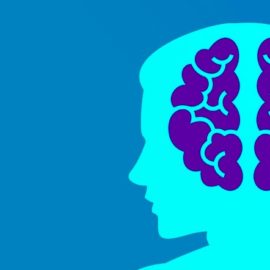
Are you afraid of death? Do you avoid thinking about it? Does an underlying sense of dread impact your joy of living?
The fear of death is pervasive in our society. In Death: An Inside Story, spiritual teacher Sadhguru aims to inject some encouragement into the issue. He offers one specific perspective and three actions you can take to help you make peace with death.
Continue reading to learn how to conquer the fear of death with Sadhguru’s recommendations.
How to Conquer the Fear of Death
Sadhguru insists that accepting death is key to living a fulfilling life, and that requires freeing yourself of fear. He shares advice on how to conquer the fear of death and provides a couple of reasons why you would do well to come to this point of peace about the matter.
First of all, once you realize that there’s no reason to be afraid of death, you’ll have an easier time accepting it. According to Sadhguru, people who fear death are actually afraid of two types of pain: First, they fear the pain associated with death itself. Luckily, he says, death itself isn’t painful—on the contrary, you can feel pain only if you’re still alive. If you’re sick, the moment you die is the moment the pain stops.
First of all, once you realize that there’s no reason to be afraid of death, you’ll have an easier time accepting it. According to Sadhguru, people who fear death are actually afraid of two types of pain: First, they fear the pain associated with death itself. Luckily, he says, death itself isn’t painful—on the contrary, you can feel pain only if you’re still alive. If you’re sick, the moment you die is the moment the pain stops.
(Shortform note: Research shows that, fortunately, most people with terminal illnesses don’t suffer intense pain in the time leading up to their death, either. On the contrary, many symptoms of fatal diseases get better as death approaches. Over 85% of palliative care patients are free of all severe symptoms of disease by the time they die, and 97.5% of them report that they’re not in severe pain in the days before their death.)
Second, Sadhguru states that people fear death because they’re afraid of the pain of losing something important to them. However, the only losses you suffer in death are those that can’t hurt you. You’re not really losing anything at all. Let’s explain how this could be the case as we dive into Sadhguru’s four tips on how to conquer the fear of death.
Tip #1: Understand What Dies
Sadhguru contends that, to be free of the fear of death, you must become aware of certain spiritual truths. Specifically, he asserts that the individual self is an illusion. What you perceive to be “yourself” primarily consists of two parts: karma and life energy. However, the part of yourself that’s conscious—who “you” really are—is life energy alone, and this energy persists beyond death eternally. Let’s break this down.
Component #1: Karma
Sadhguru explains that “karma” isn’t a means of universal judgment, as some may assume. Rather, he defines karma as a broad category of information from the past that builds up over time and manifests in some form. Your genetics, personality, atomic structure, and conscious memories are all different kinds of karma.
Component #2: Life Energy
According to Sadhguru, the other main component that makes up who you are is life energy, or consciousness. This word describes how self-aware someone—or something—is. Sadhguru asserts that everything in the universe is self-aware to some degree. The more self-aware a part of the universe is, the more of this kind of “energy” we can say it has.
When you die, Sadhguru says, almost all of the karma that makes up your identity is destroyed. Your body, mind, and memories of past experiences no longer exist. However, your life energy—the part of you reading these words right now—lives on everywhere else in the universe. Because of this, Sadhguru goes as far as to say that death doesn’t really exist; it’s just a transition to a different form of life.
The only reason you fear death is because you mistakenly believe that “you” are karma rather than life energy. You believe that your body is “you,” your emotions are “you,” and your memories are “you.” Once you realize that these are all things that occur outside of “you,” you’ll understand that losing them won’t be painful, and you’ll no longer be afraid.
Tip #2: Regularly Think About Your Death
Sadhguru recommends spending five minutes a day thinking about the fact that you’re going to die. Doing so will quickly improve your life—you’ll find it easier to appreciate life as it happens, and you’ll feel compelled to seek the meaning of life and other important truths, furthering your spiritual growth.
| Meditating on a Fate Worse Than Death Social scientist Arthur C. Brooks expands the concept of a death meditation. He contends that, although many people aren’t severely afraid of their physical death, pretty much everyone harbors a “death-fear” of some kind. That is, they’re terrified of some specific tragedy that would cause the death of their identity—the self-image that brings them contentment. For instance, Brooks says it makes him happy to think of himself as someone who uses his intelligence to support his family. Thus, his death-fear is succumbing to dementia and losing the ability to think, leaving him unable to work and support his loved ones. To meditate on your death-fear, Brooks recommends intentionally imagining it in extreme sensory detail. He imagines getting an early-onset dementia diagnosis, then telling his family the bad news, then slowly losing his mind. Brooks contends that directly confronting your death-fear in this way will help free you from it, as you accept that such a fate isn’t as bad as you assumed it would be. While Brooks doesn’t practice this kind of death meditation for five minutes every day, as Sadhguru does, he does encourage making it a regular habit. He practices this meditation once a week—which may be more manageable than a daily practice if you find that meditating on your death-fear is a truly intense experience. |
Tip #3: Meditate
According to Sadhguru, another way you can overcome your fear of death is through meditation. In a sense, meditation is a way of practicing death. Once you can quiet the mind, the karmic components of your illusory self will fade out of your experience, and you can temporarily feel what it’s like to be dead. In doing so, you come to understand that this disappearance of the self isn’t painful or anything to fear.
(Shortform note: Some Buddhist experts maintain that mindfulness meditation—in which you sit and observe the mind’s activity—isn’t just a means of experiencing death. It’s also a means of experiencing immortality. Once you allow the illusory self to fade away, you can experience dharmata, or “suchness”: the true nature of all reality, which exists outside of time. In the tradition of Tibetan Buddhism, those who achieve enlightenment experience a permanent state of dharmata; this is the goal of spiritual practice. Thus, meditating may help you do more than overcome your fear of the death of the self—you might feel more drawn to pursue an egoless state of mind.)
Tip #4: Experience Disembodied Awareness
Lastly, Sadhguru states that you can conquer your fear of death through a certain kind of spiritual experience: disembodied awareness. He explains that you’re afraid of losing your body and mind because the only kind of life you’ve experienced has been through these parts of yourself. If you can experience a little of what it’s like to exist outside of your body and mind, seeing through the universe’s eyes, you won’t be afraid to die. Certain advanced spiritual practices train your ability to control the various life energies inside of you, giving you access to these kinds of experiences on demand.
| Kriya Yoga: Energetic Training In his other writings, Sadhguru more clearly defines the spiritual practices that will help you achieve disembodied awareness on demand. These energy-focused practices are called kriya yoga, and following them is a holistic lifestyle. As Sadhguru explains in his book Inner Engineering, kriya yoga practitioners train themselves to revere the world around them and consecrate areas of high energy in their homes. They may also regularly fast for periods of 24 hours. Kriya yoga differs from jnana yoga, which involves sharpening the rational mind; bhakti yoga, which involves intense emotional devotion; and karma yoga, which involves losing yourself in action. Each of these paths is a valid way to achieve enlightenment and conquer the fear of death. Kriya yoga is unique in that it gives you greater power over the energy that makes up reality while you’re still alive. However, it requires more dedication to a disciplined lifestyle than other types of yoga. |






